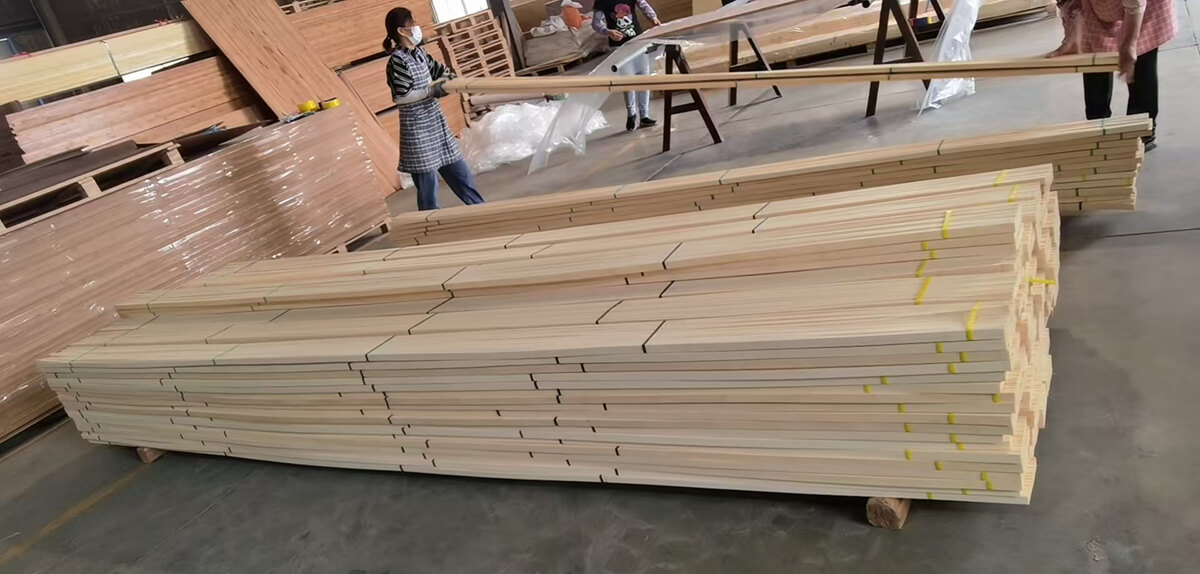Views: 0 Author: ASIA Bamboo Publish Time: 2025-06-16 Origin: Site








The Ultimate Guide to Furniture-Grade Bamboo Plywood: Grains, Colors & Best Uses
Bamboo plywood is a top choice for eco-conscious designers and furniture makers, offering unmatched durability, sustainability, and aesthetic versatility. Whether you're crafting modern cabinets, rustic tables, or sleek countertops, understanding the different grain patterns and color options will help you select the perfect material for your project.

Bamboo Plywood Grain Types
The grain structure of bamboo plywood affects both its appearance and strength. Here are the three primary types:
1. Horizontal Grain (Flat Pressed, Wide Grain)
Appearance: Shows the natural bamboo nodes ("knuckles").
Texture: Smooth with organic variations.
Best For: Tabletops, shelves, and furniture where a natural bamboo
look is desired.
2. Vertical Grain (Side Pressed, Narrow Grain)
Appearance: Tight, uniform grain with minimal node visibility—resembles traditional hardwood.
Texture: More consistent than horizontal grain.
Best For: Cabinets, doors, and modern furniture needing a clean, refined finish.
3. Strand-Woven Grain
Appearance: Dense, hardwood-like texture with a flecked or marbled pattern (no visible nodes).
Texture: Extremely hard and smooth.
Best For: High-traffic surfaces (countertops, flooring) and ultra-durable furniture.
Bamboo Plywood Color Options
Bamboo’s color can be customized through different treatments, offering a range from light natural tones to deep espresso hues.
1. Natural (Blonde) Bamboo
Color: Light golden blonde.
Process: Untreated, retaining bamboo’s original hue.
Best For: Bright, minimalist, or Scandinavian-style interiors.
2. Carbonized (Amber) Bamboo
Color: Warm caramel to medium brown (resembles walnut).
Process: Heat-treated to darken naturally.
Best For: Rustic, mid-century, or traditional designs.
3. Super Carbonized (Espresso) Bamboo
Color: Deep chocolate brown.
Process: Extended high-heat treatment for richer color.
Best For: Luxury furniture with a dramatic contrast.
4. Strand-Woven Natural
Color: Light tan with subtle flecks.
Process: Shredded fibers compressed under high pressure.
Best For: Durable, neutral-toned surfaces.
5. Strand-Woven Carbonized
Color: Medium to dark brown (similar to teak or mahogany).
Process: Strand-woven + carbonization.
Best For: High-strength applications needing warmth.
6. Zebra (Two-Tone) Bamboo
Color: Alternating light and dark stripes of carbonized and natural.
Process: Laminated layers of natural and carbonized bamboo.
Best For: Statement pieces and contemporary designs.
7. Stained or Dyed Bamboo
Colors: Black, gray, red, or custom hues.
Process: Post-production staining.
Best For: Bold, custom furniture or industrial aesthetics.
How to Choose the Right Bamboo Plywood
For Durability → Strand-woven (most scratch-resistant).
For Natural Aesthetics → Horizontal or vertical grain.
For Warm, Rich Tones → Carbonized or super carbonized.
For Unique Visuals → Zebra or stained options.
Bamboo plywood is not only sustainable but also highly adaptable—perfect for everything from kitchen cabinets to artistic furniture pieces.